For more information and quotation – please
contact our office.
Cesky Krumlov
Cesky Krumlov is a pride of Southern Bohemia. The castle and chateau complex (the
second largest in the republic after the Prague Castle) is the town dominant.
Under the castle you can find the quarter of Latran and the Old Town which is
connected with the castle by two bridges. The core of the Old town is one of the
most significant city centres in Bohemia. Many houses with original interior
occur there. The most important era of the city is connected with the Lords of
Rosenberg (Rozmberk). During the reign of this family the town as well as the
castle flourished. All following sites are truly worth seeing: the castle and
chateau complex, the St. Vitus Church, the Museum, the Miner's Museum, The Egon
Schiele's Artcentre.
Cesky Stenberk
The castle is situated on a ridge above the Sazava River. The fortress dates
back to the 13th century. The scenery on the trip up to the castle is itself
worth seeing. You will surely enjoy deep forests, steep contours and limestone
crags.
Jicin and Czech Paradise
Jicin – the town is intimately united with Albrecht of Wallenstein. He acquired
the town and transformed an old castle into his residence. His plans with the
town were cut off by his assassination in Cheb in 1643. Czech Paradise – one
part of the Czech Paradise has been the oldest protected area in the Czech
Republic (since 1955). After seeing its incredible beauty you will understand
the name – Czech Paradise. The area comprises of some of the best rock "towns"
in the CR, dominant hills of eruption rocks, pinewoods, numerous ponds, romantic
ruins and meadows. There are two ways to the Czech Paradise – from Turnov or
from Jicin.
Karlovy Vary
Full day excursion to Karlovy Vary, which is a world famous spa and tourist
centre. Karlovy Vary is located in the valley of the river Tepla (which means
warm in Czech). The town was founded by Emperor Charles IV. Legend has it that
he discovered the warm springs during a hunt. 12 curative springs mainly treat
disorders of the metabolism and gastric diseases. Karlovy Vary has always had a
rich cultural and social life, and every year in July the town becomes the venue
of the International film festival. Karlsbad china (blue onion patterned
porcelain) and glassworks moser are well known all over the world as well as the
unofficial 13th spring, the original herbal liquer of Jan Becher, named
Becherovka.
Karlstejn Castle / Konopiste Chateau
Karlstejn – this excursion visits one of the most impressive bohemian castles.
The Karlstejn castle was built by Charles to guard the emperor crown jewels and
holy relics. About 35 km from Prague, surrounded by woods and built on a 300 m
chalky rock, this castle is a glorious example of medieval architecture. The
castle is built in Peak Gothic style and is one of the most visited castles in
the Czech Republic. The most famous part of the castle is the Chapel of the Holy
Cross. Master Theodoricus decorated the chapel with 127 Gothic paintings. The
Konopiste Chateau is one of the most visited sites of Bohemia due to its ties
with the Habsburg monarchy and favourable location for Prague visitors. The last
owner of the chateau was Francis Ferdinand d'Este whose assassination in
Sarajevo started the WWI. Because he was a passionate shooter we can see a
breath–taking collection of thousands of hunting trophies as well as the unique
armoury in the chateau. A park with a pond and a greenhouse surround the chateau.
Kutna Hora and Cesky Sternberk
Kutna Hora is a former royal silver town, nowadays it is the cultural, political
and economic centre of Eastern Bohemia. Its power reached its height in the 15th
and the 16th century, when the richest silver mines in Europe were found there.
The town has kept the atmosphere and appearance of a medieval town till today.
Among the most dominant monuments of the town are: The St Barbora Cathedral
which – a piece of Gothic architecture of the 14th century, The Italian Court –
a former royal residence (The Czech coins (groshens and tollars) were minted
there), the former gothic fortification Hradek, The St James Church which is
consecrated to the patron of miners – St James, a monumental Baroque called the
Nunnery of Ursulines. Suffice to say that Kutna hora city centre is protected by
UNESCO. Cesky Sternberk – the castle is situated on a ridge above the Sazava
River. The fortress dates back to the 13th century. The scenery on the trip up
to the castle is itself worth seeing. You will surely enjoy deep forests, steep
contours and limestone crags.
Lidice and Terezin
Lidice – this excursion visits a village which was completely destroyed by the
Nazi's on June 10th , 1942 in retaliation for the assassination of SS General
Reichsprotektor Heydrich by Czechoslovak paratroopers. Lidice's men were shot
and its women and children transported to concentration camps. Museum and
monument are located on the former grounds of the village. Terezin Memorial – It
was originally a large fortress built during the reign of Emperor Joseph II. In
1941 (during WWII) it was converted into a ghetto for Jews from the Protectorate
of Bohemia ad Moravia. From 1942 Jews from Germany, Austria, Holland, Denmark,
Slovakia and Hungary were also deported to Terezin. The camp served mainly as a
collective and transit place. Between 1941 and 1945 Nazis deported up to 150 000
people to Terezin, 35 000 of them died there. The Terezin Memorial to
commemorate all those who suffered and died there was founded in 1947. Museum,
cemetery and small fortress containing the equipment from the concentration
camp.
Marianske Lazne
which is better known under its German name Marienbad, is a visit to one of the
most picturesque spa resort. Marianske Lazne was founded in 1805. About 40 cold
springs rise in the spa territory and provide treatment against diseases of the
respiratory tract and urological disorders. Most of the spa and the public
houses were built in the 19th century and were recently renovated. The beautiful
spa colonnade is surrounded by large parks. Another must see is the singing
fountain.
Plzen
Plzen is the industrial, commercial and cultural centre of the West Bohemia. The
town was founded in 1295 on a trade route between Prague and Nurenberg. Plzen is famous for its Pilsner Urquell brewery. In a historic core of the city one should visit the St Bartolomew's Cathedral, the Gothic Franciscan monastery
and the world's 3rd largest synagogue (after synagogues in Jerusalem and Budapest).
Tabor
The town of Tabor was founded in 1420 by Hussites. The spirit of Tabor was based
on following principles: equality among all inhabitants and sharing things
because "everything is common to all". Everyone who wished to live in a
community had to place all his property into urns placed in the square. The
whole town is designed as a military bastion. Enemies must have been confused by
medieval narrow streets and lanes and underground corridors helped defenders
escape. There are many historic sites you should not pass during your visit: The
Museum of Hussites – documents, object and weapons of the Hussite movement in
the 15th century, the Jan Zizka Memorial – Jan Zizka was a Hussite brilliant
military leader, the Bechynska Gate, the Zizka's Square. |
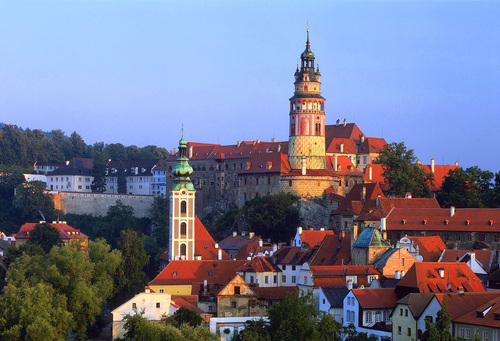
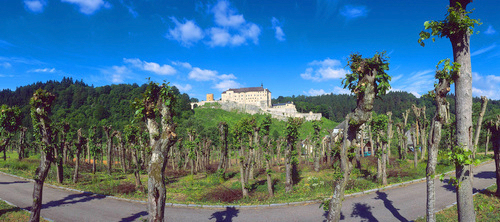
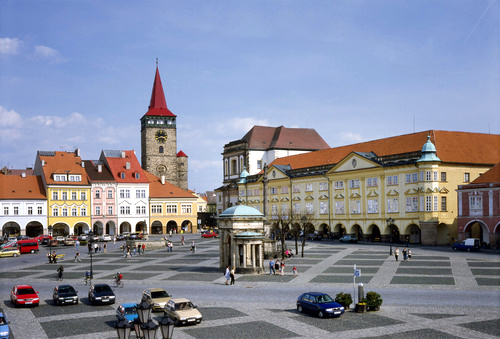
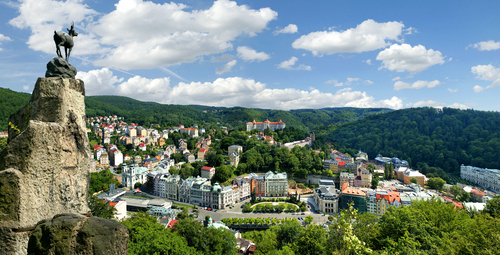
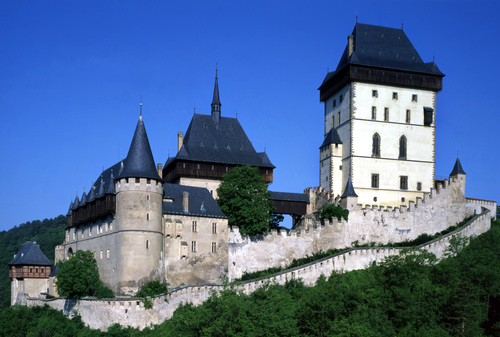
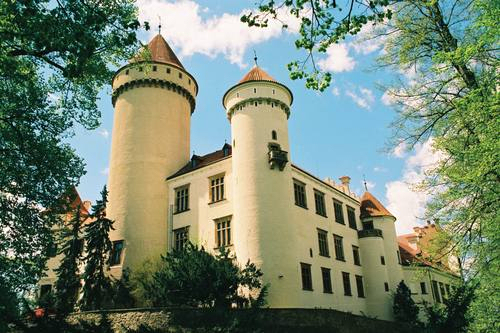
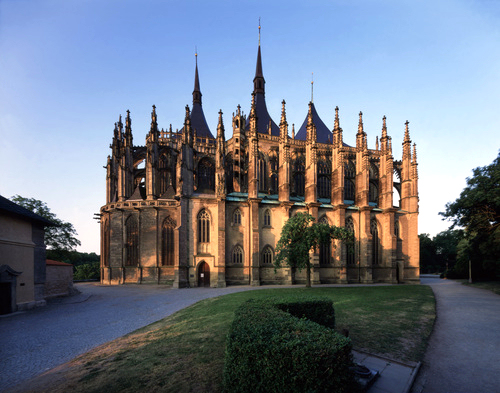
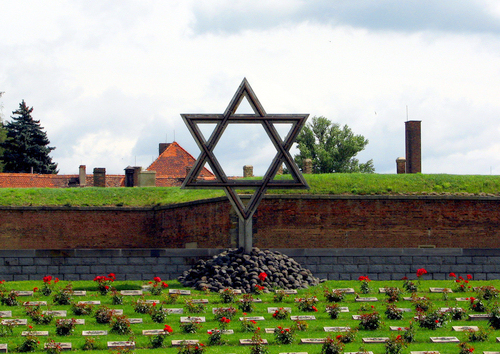
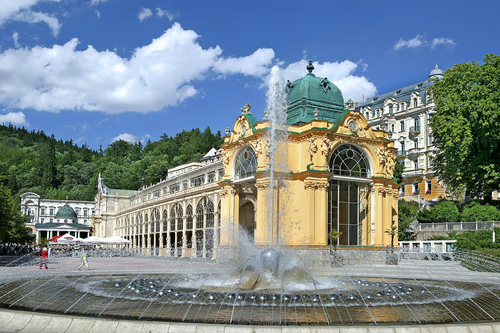
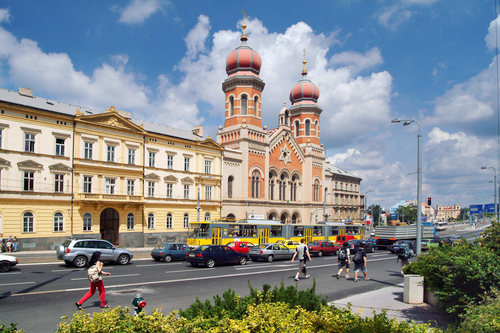
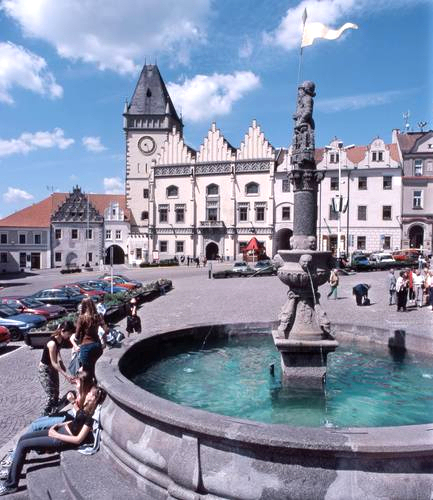
|


